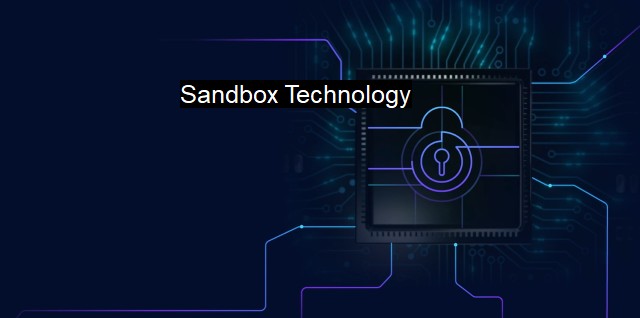What is Sandbox Technology?
Exploring the Critical Role of Sandbox Technology in Cybersecurity: A Guide on How it Works and its Impacts on Anti-virus Solutions
Sandbox technology is a well-implemented methodology to investigate suspicious programs and understand their behavior. This advanced technology offers an isolated environment to execute potentially harmful software, where they cannot affect any other part of the system. Primarily, it acts as a fenced area isolated from other sensitive areas of the network where operations of hostile or untrusted programs can be safely analyzed for potential threats.The essential functionality of sandbox technology is to create an operational landscape where questionable code or programs can function freely, replicating an actual operating environment but without impacting a system's core functions or data storage. It permits the execution of the potentially harmful software's code in an isolated environment, which allows observing any malicious behavioral patterns closely. These behavioral patterns could be attempts to modify or delete files, connect to an external server, or serve espionage functions such as capturing keystrokes.
Cybersecurity and antivirus solutions rely heavily on sandbox technology, mainly owing to the ever-growing complexity of modern-day cyber attacks. Today, a considerable amount of malware is sophisticatedly designed to circumvent traditional antivirus software. They may remain inactive or exhibit harmless behavior when scanned by an antivirus, essentially hiding their intentions. By simulating the execution of these programs within a sandbox environment, anti-malware solutions can identify and isolate these stealthy threats.
Getting more technical, sandbox technologies can be classified into two types based on their operational pattern. Full system emulation sandboxes form the first type wherein an entire operating system is simulated, including all hardware and system components. analysis of high & low-level system behaviors is performed. This method is reliable in identifying relatively complex or sophisticated threats that attempt to scrutinize its execution environment. it is computationally exhaustive and slow.
Whereas, the second type are system API hooking sandboxes, wherein the sandbox monitors and records the application's calls to the API functions within the host operating system. This method is computationally less exhaustive and fast, but it is less reliable in identifying more sophisticated threats.
Sandbox technology brings a lot of value in protecting the system against 'Zero-day' attacks. These are unpredictable events where novel malware, unknown to antivirus software, exploits a software vulnerability. STM solutions are limited at best in dealing with these scenarios. Sandboxes offer an extra layer of protection as they allow tracking and analyzing of these unknown threats by executing them in a controlled environment.
Despite its added layer of security, one must be aware that sandbox technology has specific limitations and vulnerabilities. Experts have identified evasion techniques used by attackers to avoid detection by sandboxes. For instance, a sophisticated malware may scoff at executing damaging behaviors if it detects a virtual environment or a delay in execution by waiting to see if it is within a sandbox.
Even with these limitations, sandboxing is a valuable strategy within modern cybersecurity defenses. It allows for another layer of analysis of potential threats, reducing the risk of a damaging intrusion. With the world becoming increasingly digital, the importance of improved security measures including sandbox technology is escalating. By creating an environment where potential malware can be observed and analyzed without risk, cybersecurity professionals can better protect systems and networks against a world of rapidly escalating threats.
Sandbox technology pertaining to cybersecurity and antivirus is an integral mechanism that provides an additional layer of defense against cyber threats. It offers a safe environment to effectively detect, analyze, and understand complex malicious behaviors. Despite its vulnerabilities, the technology plays a significant role in defending against advanced cyber threats, providing evolving ways to protect our systems and data from ever-increasing cyber intrusions.

Sandbox Technology FAQs
What is sandbox technology in cybersecurity?
Sandbox technology is a security mechanism that creates a virtualized environment to execute potentially malicious files or applications. This helps in detecting and analyzing malware without risking the safety of the host system.How does sandbox technology work?
Sandbox technology isolates suspicious files or programs in a simulated environment where they can be analyzed for potential malicious behavior. The behavior is observed, recorded, and analyzed to determine if it poses any threat to the host system.What are the benefits of using sandbox technology in antivirus software?
Using sandbox technology in antivirus software provides an additional layer of protection by detecting and analyzing malware in a virtualized environment. This helps in identifying new and unknown types of malware that may not be detected by traditional antivirus solutions.Is sandbox technology foolproof in detecting malware?
Although sandbox technology provides an additional layer of protection against malware, it is not foolproof. Sophisticated malware can detect the virtualized environment and alter their behavior to evade detection. However, using sandbox technology in conjunction with other security measures can improve the overall security of a system.| | A | | | B | | | C | | | D | | | E | | | F | | | G | | | H | | | I | | | J | | | K | | | L | | | M | |
| | N | | | O | | | P | | | Q | | | R | | | S | | | T | | | U | | | V | | | W | | | X | | | Y | | | Z | |
| | 1 | | | 2 | | | 3 | | | 4 | | | 7 | | | 8 | | |||||||